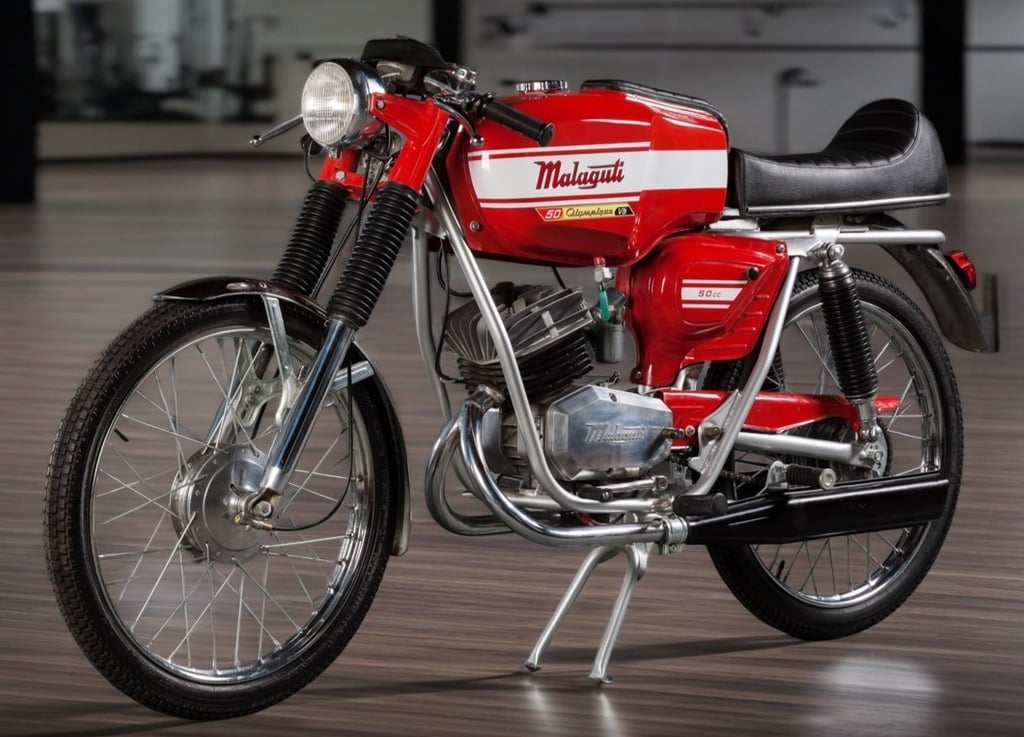The Malaguti Olympique V5: An Emblem of Rebellion and Freedom
The article delves into the history and significance of the 1975 Malaguti Olympique V5, a sports moped that became a symbol of freedom and rebellion in the 70s. It explores the heritage of Malaguti, the design and performance of the Olympique V5, its cultural impact, and its enduring legacy among collectors and enthusiasts.
ITALY TWO STROKE1970'SSPORTS MOPEDSMALAGUTI
3/17/20242 min read


The Malaguti Olympique V5: An Emblem of Rebellion and Freedom
Introduction
The 1975 Malaguti Olympique V5 captured the essence of speed and style, offering a distinct blend of performance and Italian craftsmanship. As a celebrated sports moped of its time, the Olympique V5 became a symbol of freedom and rebellion for the youth of the 70s. This article aims to explore the journey and impact of this classic racer, from its inception to its lasting legacy among motorcycle enthusiasts.
The Heritage of Malaguti
Founded in 1930 by Antonino Malaguti in Bologna, Italy, Malaguti initially excelled in creating bicycles before diving into the world of mopeds and motorcycles. The transition marked a significant turn, offering innovative models that resonated with enthusiasts. By the time the 1975 Olympique V5 was introduced, Malaguti had already established a reputation for combining engineering prowess with elegant design. The Olympique V5 was a culmination of decades of passion and expertise, showcasing the brand's commitment to excellence in the competitive world of sports mopeds.
Design and Performance
The Olympique V5 was known for its sleek, aerodynamic design and vivid color scheme that caught the eye. Its heart was a Franco Morini 49 cc 6.5 hp engine at 8500 rpm, propelling it to speeds of up to 100 km/h—a remarkable feat for a 50cc moped of that era. The V5 variant boasted a five-speed transmission, allowing for a nuanced control over its blistering performance. From the rounded contours of its body to the precision of its mechanical engineering, the Olympique V5 was a masterpiece of form and function combined.
Cultural Impact
The Malaguti Olympique V5 didn't just break new ground with its technical specifications; it also captured the imagination of an entire generation. With the 70s being a pivotal time for youth culture, the Olympique V5 was more than a simple mode of transportation—it was a statement of independence and a ticket to adventure. It mirrored the era's spirit, where speed and style merged seamlessly. As young riders took to the streets, the Olympique V5 became a symbol of freedom, embodying the rebellion and aspirations of the youth of the 70s.
The Olympique V5 Today: Collectibility and Membership
Today, the 1975 Malaguti Olympique V5 holds a special place in the hearts of collectors and vintage motorcycle enthusiasts worldwide. Its rarity and historical significance make it a sought-after piece for aficionados. The Olympique V5 continues to be celebrated at motorcycle shows and gatherings, where its engineering and design are appreciated by new generations. Online forums and clubs dedicated to Malaguti enthusiasts provide a platform for sharing stories, maintenance tips, and the sheer joy of owning a piece of motorcycle racing history. The Olympique V5's enduring legacy is a testament to its timeless appeal and the lasting impact of Malaguti's innovation.
Conclusion
The 1975 Malaguti Olympique V5 not only marked a significant milestone in the realm of sports mopeds but also left an indelible mark on the annals of motorcycle history. Its blend of cutting-edge design, remarkable performance, and cultural impact during a transformative era speaks volumes about its legacy. As enthusiasts and collectors continue to celebrate its remarkable story, the Olympique V5 stands as a testament to the innovation and spirit of Malaguti. It embodies a time when motorcycles were not just modes of transport but symbols of freedom, adventure, and personal expression. This quintessential Italian moped remains an icon of the 1970s, cherished by those who remember its glory days and revered by those who appreciate the golden era of motorcycling.
